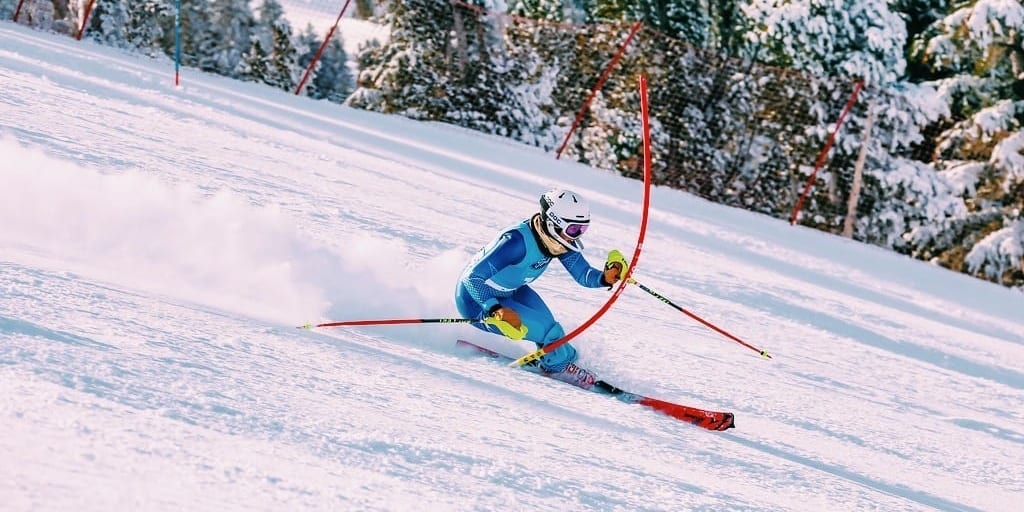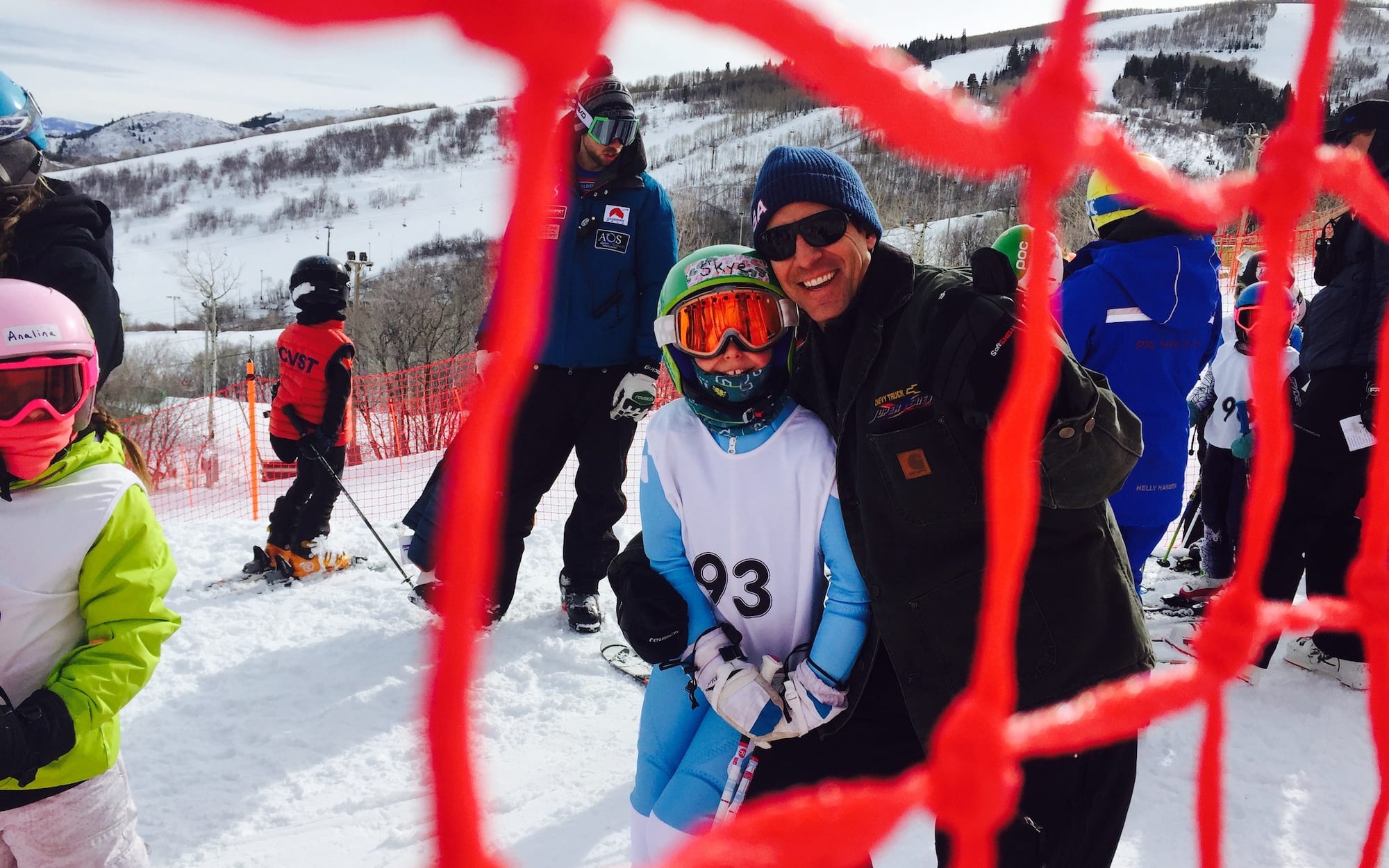8 Things You (Probably) Don’t Know About Spyder Speed Suits
Spider webs are practically synonymous with North American ski racing. If you’ve walked around in a red, white and blue U.S. Ski Team speed suit, small children might haven mistaken you for Spider-Man – even if you’re a girl. That super hero association is no coincidence.
“We tend to look at our athletes as superheroes, and of course who doesn’t want to feel like they hold powers?” Dani Wolters, a designer with Spyder, says about the speed suit designs she works on.
So, what else goes into designing the iconic Spyder suits that are the envy of the ski world?
1. Color correlates to speed.
Color is a big factor because of the porosity of the suit, according to Wolters.
“Red is a great color because it is not as dense, while blue requires more ink and in turn can decrease the porosity,” the designer reveals. “A lot of racers like white because no ink is used and therefore, (it’s) at the best porosity.”
That could explain Lindsey Vonn’s fascination with white-centric speed suits.
2. Hundies matter. Wind tunnels help with that.
When Spyder needs to test fabrics and fit, they head to a wind tunnel with top athletes like Steven Nyman, who has been a Spyder athlete for several years.
“They all vary,” says TJ Lanning, former member of the U.S. Ski Team and current technical specialist in innovation at Spyder. Lanning has a unique perspective on the process having participated in wind tunnel testing when he was an athlete. “Some are climatic, which is key for our testing because the weather is never the same. Downhill skiing is in the elements, and so we try to test as much as we can there. And that’s weird because you’re basically walking into a giant refrigerator with wind blowing in your face.”

Spyder
Once a fabric or fit is determined to be fast in a tunnel, they take it to the snow. Lanning said that even if the tunnel indicated the fabric is fast, out in the world anything can happen, which sometimes means going back to the drawing board. Spyder is currently working on some super hush-hush fabric innovations, so Lanning was not at liberty to say more than that.
3. World Cup athletes get custom-fitted suits.
When you buy a suit off the shelf of your local ski shop, you might consult a size chart or try it on. Once you make it big as a pro, suits don’t come directly off the rack. Instead, they are produced with personalized touches.
“I think the most important part is fit,” Lanning explains. “Athletes change. They shrink. They grow. We’re always measuring – a couple times a year – and then not producing all the U.S. Ski Team suits at once. We’re producing batches quarterly more or less and then we’re making adjustments according to the athletes’ feedback and physique changes.”
As Lanning put it, the fit that works for Steve Nyman clearly won’t work for Andrew Weibrecht. Custom sizing ensures that the athletes are comfortable in their second skin.
4. When it comes to the graphics, the athletes bring their own ideas to the table.
Each year, Vonn and Julia Mancuso have three different speed suit designs.
“Julia and Lindsey typically have ideas, images or sketches they share upfront with what they are wanting for the season,” Wolters explains. “We will sketch out three race suits and send to them for review.” So, when you buy one of Vonn’s suits, you’re getting a little bit of the Speed Queen’s personality built into you garb.
There’s less of an individualistic sense on the men’s speed team, as all members of the squad sport the same design. The U.S. Ski Team’s Wiley Maple played a role in designing the American Downhiller suit, which was inspired by Marco Sullivan and Steven Nyman’s leadership a few years ago. Kai Collings, the son of Spyder’s Head of Marketing Brady Collings, also played a big role, sketching out a primarily red suit with a star on the chest.

Spyder
5. Other athletes keep the design in the family.
Canadian independent racer Larisa Yurkiw engages her brother Harrison, an art director, in the design of her suits.

@LarisaYurkiw
“Larisa Yurkiw has a talented brother that will help with the design process,” Wolters says. “He will bring ideas and sketches. … We will guide him through placement and layout on the suit. He enjoys being a part of the whole process, including the pattern layout to make sure his full vision is seen through.”
6. Suits are printed and tested in Europe.
Every year, the fabric comes from the Swiss-German textile mill where Spyder sources its materials. The company they work with is the conglomerate of this kind of production, according to Lanning.
“After they’ve fabricated the fabric, they ship it and get it FIS approved,” according to Lanning. “The whole roll before the suits are even made, and everyone that manufactures suits has to do that. It’s kind of silly and mundane and adds an expense, but it’s a FIS rule.”
Once the fabric has the OK from the FIS, one of the manufacturing companies Spyder uses then prints all the suits with the designs and cuts the material to stitch them together. Voila! A World Cup speed suit is born.
7. The aluminum FIS plomb is about to be a thing of the past.
For years, FIS-legal suits have been marked with a silver nickel-sized tag on the lower leg, indicating that the suit met porosity standards. That is about to change, with a new rule that goes into effect in the coming years for racers at FIS competitions.

Spyder
“After 2018, if you have an aluminum plomb suit, you can’t race with it,” Lanning notes.
Instead, the designation will be printed directly on the speed suit material, putting more onus on Spyder to get the material tested and FIS-approved before the speed suits are sewn together and thus relieving athletes of the need to get their suit tested after purchase.
8. Speed suits have a good side.
We all know someone who says, “Photograph me from my good side.” Designers at Spyder work to make sure that athletes look good from 360 degrees whether they are in a tuck or on the podium. Wolters, who leads the design team, lays out every design like a puzzle to make sure the right areas are highlighted.

Lindsey Vonn on the cover of Sports Illustrated in 2011.
“We lay out the graphics on the patterns to make sure a certain part of the graphic is placed on the correct part of the body, especially areas we want highlighted when the racers are photographed in the tucks and turns,” she explains. “Laying them out ourselves also ensures the graphic does not create any unflattering or questionable shapes or lines on the body. It is important to keep in mind where the lines and graphics line up on the body and seam lines to prevent this.”
Want to dress like your favorite U.S. Ski Team athlete? Lanning says that the 2015-16 speed suits will go on sale late this summer. As for next season’s U.S. Ski Team suits, we’ll all be anxiously waiting for their grand reveal in Soelden, Austria, come October.






















